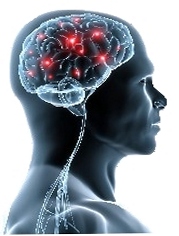This study of Repeater Phenomenon in Migraineurs included 465 migraine patients and was conducted by Veronica Villani, MD and colleagues at the "Enzo Borzomsti" Pain Center in Rome, Italy.
Headache is one of the most common symptoms in an emergency department (ED), while migraine is the most frequently observed headache in this setting.
All patients in this study underwent the Migraine Disability Assessment Scale for evaluation of migraine disability, in addition to the Beck Depression Inventory and other assessments for evaluation of depressive, anxiety and alexithymic symptoms (inability to identify and express emotion). According to Norman S. Lumley, MA (Psychosom Med) subjects with alexithymia may be more likely to seek the help of a physician for the treatment of physical signs and symptoms, which may largely explain the repeater phenomenon in our migraine patients.
The data from the study reveals that the personality of repeater migraine patients is characterized by HA behavior, a personality profile that indicates cautious, tense, apprehensive, fearful, and inhibited behavior, as supported by CR Cloninger, detailing a systematic method for clinical description and classification of personality variants (Arch Gen Psychiatry).
The repeater migraine is a complex phenomenon both from a clinical and personality point of view. The repeater migraine patient is characterized by alexithymic and harm avoidance behavior associated with a depressed and anxious state. Clinical aspects, and, or the psychological pattern, may predispose migraine subjects to multiple ED admissions and may, at the same time, be one of the main causes of undiagnosed migraine.
It is important for the HC and the ED to work in close collaboration to provide a correct diagnosis and specific therapy for this unique group of migraine patients. This network may also insure a proper follow-up, with the final outcome being a decrease in migraine disability and health care resource use and expenditure.

